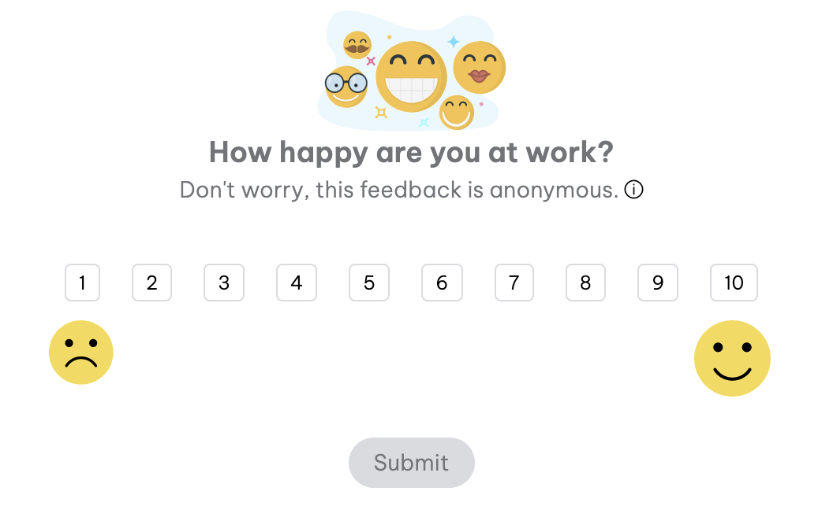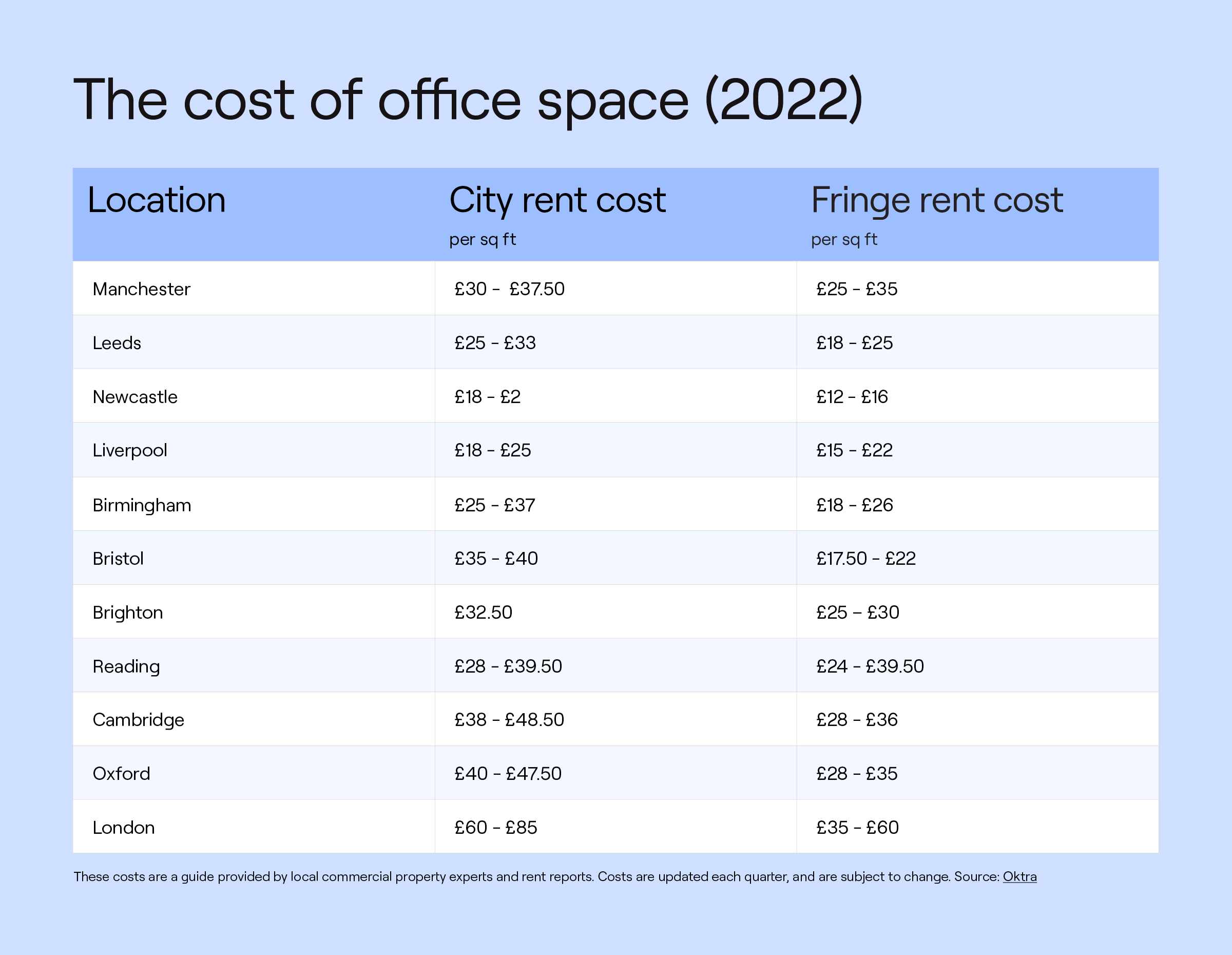8 effective ways to reduce staff costs in 2024 (without letting them go)
Times are tough for small businesses out there – we see you. Let’s talk about reducing costs without losing your people.

The Office of National Statistics revealed in August 2024, that one in five (20%) businesses reported an increase in staffing costs over the last three months. A further 17% of businesses expect staffing costs to increase over the next three months. It’s clear that running a business is expensive, and many businesses are under pressure to increase salaries, while also reducing costs. So what can businesses do to stay afloat? We invite you to come with us on this journey. Stay strong, check in on your company values and goals, and let’s look at other ways to reduce staff costs without letting your people go.
1. Reduce recruitment costs
The cost of recruitment should be factored into the hiring process, especially as it can be an expensive process. However, the costs involved will vary depending on whether you use a recruitment agency or have an internal hiring team. It’s also important to remember that the longer the hiring process takes, the more expensive it is going to be! The point is, recruitment costs can quickly add up. Don’t forget to take into consideration factors such as:
- Salary of your recruitment team
- Salaries of extra team members involved in the hiring process
- Internal commissions or referral bonuses you might have set up
- Advertising and online job board costs
- Software that you use to hire employees
Recruiters and agencies tend to be paid on commission which can be a percentage of the employee’s starting salary – typically 20%–30%. If you’re looking to save money and enhance the efficiency of your hiring process, consider an all-in-one HR, hiring and payroll platform. Not only will it save you money, but it will simplify your processes and save your business time. As an example of how much you could save by using the Employment Hero, Vikings Group saves over £13.400 a year using our platform. We have also had great feedback from our clients, with Chesamel saying that Employment Hero is “definitely saving time and simplifying the process and saving money. It was the triple trifecta”.
2. Reduce employee turnover
If replacing staff is expensive, a good way of saving money is by retaining staff. Reducing employee turnover is beneficial for more than finances, though, it will also increase employee happiness and morale. The cost of staff turnover factors in a broad spectrum of costs, from loss in productivity to the time spent training your employees, plus any recruitment and equipment costs for your new hire, and the costs of finding a new person to fill the role. This has a knock on impact on staff morale and company culture, so it’s not a good spiral to get stuck in. Besides, it’s costly. In the UK, the average cost of employee turnover is around £11,000 per person.
3. Reduce employee absenteeism
Absenteeism is a tricky issue for employers to deal with. It differs from paid time off, or sick leave and puts employers in an awkward position. Absenteeism is when employees miss work “without good reason.” Although this is a standard definition, it can reinforce negative attitudes. It can be better defined as the frequent planned or unplanned absence of a staff member. While it’s hard to get the hard stats on it (employees don’t often feel empowered to give detailed explanations), the top reasons for absenteeism tend to be around mental health, burnout, or caring responsibilities. So let’s give that a name – wellbeing, or lack thereof. But here’s the thing. According to research by Westfield Health, absenteeism costs UK businesses around £14 billion each year. This number makes it clear that absenteeism is something we can’t afford to ignore. If there was one upside to the pandemic, it’s that it shone a spotlight on how important it is to look after employee wellbeing and happiness. So employee wellbeing is trending, and we are all the way here for it. A big part of our mission at Employment Hero is about improving employee wellbeing and happiness levels – a noble enough pursuit in itself, we think. But for employers, looking after your employees’ wellbeing is key to reducing employee absenteeism, which, in return, reduces costs of absent staff, improves your productivity, and boosts your bottom line. That’s a win-win-win-win in our book. Need to test the temperature on your staff happiness levels? Be proactive with employee engagement using Employment Hero’s Happiness Survey.

4. Streamline payroll processes
Payroll can be quite a significant cost for small businesses – as well as the biggest headache. But it’s not a cost you can just opt out of. Employees aren’t going to pay themselves, right? According to startup and scale-up growth funding specialists FundSquire, labour cost averages at 70% of all expenses in a given business. They also note that every year, companies spend over 100 hours manually managing the payroll for every 25 employees they have. That just sounds costly. Fortunately, there are ways to streamline your payroll processes. From tracking attendance and timesheets, to accurately calculating wages, leave and overtime, you can save a whole lot of time and money by using payroll software like Employment Hero. All-in-one, cloud based platforms can help you go paperless. Besides saving cost, switching to paperless – for example, using electronic timesheets, you can automate processes on admin tasks and reduce human error.

5. Reduce labour costs with effective rostering
Labour costs are a huge expenditure for businesses. And this isn’t even taking into consideration the time and manual effort it takes to keep track of attendance and schedule rotas. One way of reducing costs is through automating these processes. Automating your time and attendance tracking system makes scheduling painless. When it’s configured to exactly what your business needs, it’s easy to budget and allocate shift patterns, as well as calculate wages, flag penalty rates for overtime or weekend work, and enable shift swapping. We’ll give ourselves a little shout out here. Because the Employment Hero platform provides:
- digital timesheets,
- smart rotas (so you can assign skills, input availability, and allow the system to recommend the right people for each shift),
- and award interpretations (you can enforce various work rules to each employee’s start and stop times so that they can be automatically interpreted into each individual payroll element).
Embrace the joy of smart rostering and just watch those admin hours and costs go down.
6. Allow voluntary reduced hours
If you need to seriously rethink your workforce costs, one way to reduce costs without redundancies is to allow voluntary reduced hours – also called short-time working. A voluntary reduction in hours means that you allow your employees to voluntarily reduce their working hours and pay for a specified period of time. Not all employees will want to do this, but some will if the alternative is a risk of redundancy or termination. There are ramifications, of course. It can lead to a loss in benefits for the employee. If you go down this path, make sure to seek advice to ensure you’re following the letter of the law and you’re not engaging in any unfair employment practice. Any changes to contracts must be agreed to and documented. Effective communication is also vital – make sure you get any changes approved by your legal team. Bear in mind you need to be aware of your obligations should employees elect to take redundancy rather than agreeing to reduced hours.
7. Prioritise upskilling your employees
One way to reduce staff costs is to ensure your employees are up to date with relevant essential skills. It might sound counterintuitive to invest in learning and training when you’re trying to reduce costs, but hear us out. Upskilling is vital to replace outdated skills that might actually be costing your productivity. Indeed, a study conducted by PWC found that four out of five CEOs believe workers who lack essential skills and training are considered a threat to organisational growth. That’s why, as an employer, you need to offer learning and development opportunities for your team. It’s important for businesses to be agile and have the ability to adapt when faced with change or challenges. And upskilling your team comes at a far smaller cost to your business than hiring a replacement. By expanding the skillsets of your current employees, you will find yourself with a more diverse, agile, innovative, well-rounded workforce that can adapt quickly to change. If you need a helping hand with providing cost-effective training and learning opportunities, look no further than our learning management system. Like a fiercely proud parent, we’re just so delighted with how it helps employees to learn and grow.
8. Reduce office costs
As it turns out, we’re very capable of working from home. Who knew? Before 2020, working from home was the exception and not the rule. But that has all changed. According to Finder, 44% of the population were still working from home at least some of the time in 2023.
We’re huge advocates for remote, flexible and hybrid models for many reasons, employee wellbeing and improved retention just being two. Remote work also makes work more accessible and more inclusive.
But remote models also save money. Even if going fully remote isn’t an option for your company, a hybrid working model saves businesses an average of £8,100 per employee. This is partly because utilising office space more flexibly can help reduce expenses by saving on traditionally fixed overhead costs, including rent, heating, and support staff.
 So if you want to save money on your staff costs and remote work is an option for your business, then going remote or reducing the amount of time in the office is our best tip.
So if you want to save money on your staff costs and remote work is an option for your business, then going remote or reducing the amount of time in the office is our best tip.
The wrap up
Reducing staff costs isn’t always simple and there are lots of complexities involved. However, we believe that company culture is key in reducing staff costs in the long run. Your success depends on the people who work for you. Making sure your company is a great place to work and has a thriving culture will go a long way to improve wellbeing in the workplace, reduce employee absenteeism and staff turnover, and attract top talent to work for you. If you’re looking for a solution to help save time and reduce costs so you can focus on the important things, like your people, Employment Hero has you covered. Our all-in-one HR, hiring and payroll solution is built to flex with your business. Offering everything you need, from finding and hiring top talent to onboarding new hires, automating complex payroll and driving employee engagement, all backed by UK-based support. Check out our guide to developing company culture here. Or talk to one of our specialists today!
Related Resources
-
 Read more: Is your HR system still stuck in the Stone Age? It’s time to future-proof
Read more: Is your HR system still stuck in the Stone Age? It’s time to future-proofIs your HR system still stuck in the Stone Age? It’s time to future-proof
Manual HR processes create hidden costs and risks. Learn how a future-proof HR system can unlock efficiency, compliance, and business…
-
 Read more: Product Update: June 2025
Read more: Product Update: June 2025Product Update: June 2025
Follow our June 2025 product update as we share all of the latest and greatest features we’ve released over the…
-
 Read more: Employment Rights Bill: 6 Big Potential Changes on the Table
Read more: Employment Rights Bill: 6 Big Potential Changes on the TableEmployment Rights Bill: 6 Big Potential Changes on the Table
Stay compliant with upcoming changes to the UK Employment Rights Bill. Explore 6 potential amendments covering NDA bans, fire &…












